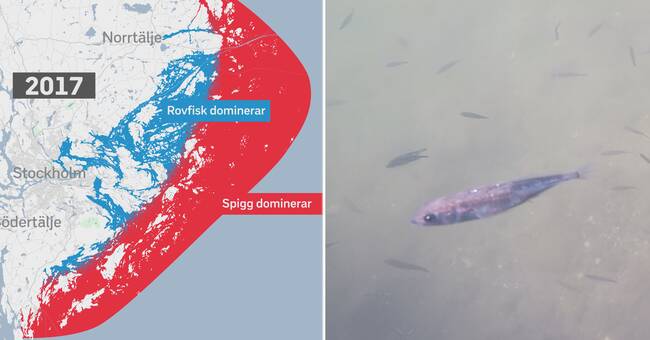The great spike, a small fish that rarely grows more than 10 centimeters long, has increased sharply along the Swedish east coast over the past 40 years, shows a new study by researchers from Stockholm University, the Swedish University of Agricultural Sciences and the University of Groningen, the Netherlands.
- The consequence will be that the structures and processes of the ecosystem drastically change, says Johan Eklöf, marine biologist at Stockholm University and lead author of the study.
The spike eats the small animals that keep the algae in the Baltic Sea in check.
- Large amounts of spikes lead to a cat-on-the-rat game, where the spikes eat small crustaceans and snails which in turn eat fine-grained algae and phytoplankton.
So much spike gives stronger algae blooms, says Johan Eklöf.
40 years of surveys are compiled
The researchers have now analyzed data from 40 years of surveys of predatory fish and spawning fry in almost 500 bays along the Swedish east coast.
The results that are now published show a so-called regime change, where the spike in more and more bays has increased and contributed to knocking out the predatory fish perch and pike fry.
Even though the perch and pike eat large spikes, the spike eats their eggs and fry, which shows that the prey can sometimes become the hunter.
Cause not determined
The reason why the spike is becoming more and more dominant along the coasts has not been determined.
But the researchers' hypothesis is that it has to do with eutrophication and the impact of climate change on the Baltic Sea.
Fishing for large predatory fish such as perch, pike, cod and large herring may also have contributed, as they have spikes as food.
Start fishing spigg
A short-term solution is to start fishing for spikes on a large scale, after having properly evaluated the risks with this.
Since spigg has a high fat content, it would be suitable as a content in fish feed, according to Johan Eklöf.
The next research project for marine biologists at Stockholm University is to determine the causes of the increase in spikes and to suggest how best to remedy the problem.
The study is published in Nature Communications.

